Alice Toniolo
Text-to-Image Generation for Vocabulary Learning Using the Keyword Method
Jan 28, 2025Abstract:The 'keyword method' is an effective technique for learning vocabulary of a foreign language. It involves creating a memorable visual link between what a word means and what its pronunciation in a foreign language sounds like in the learner's native language. However, these memorable visual links remain implicit in the people's mind and are not easy to remember for a large set of words. To enhance the memorisation and recall of the vocabulary, we developed an application that combines the keyword method with text-to-image generators to externalise the memorable visual links into visuals. These visuals represent additional stimuli during the memorisation process. To explore the effectiveness of this approach we first run a pilot study to investigate how difficult it is to externalise the descriptions of mental visualisations of memorable links, by asking participants to write them down. We used these descriptions as prompts for text-to-image generator (DALL-E2) to convert them into images and asked participants to select their favourites. Next, we compared different text-to-image generators (DALL-E2, Midjourney, Stable and Latent Diffusion) to evaluate the perceived quality of the generated images by each. Despite heterogeneous results, participants mostly preferred images generated by DALL-E2, which was used also for the final study. In this study, we investigated whether providing such images enhances the retention of vocabulary being learned, compared to the keyword method only. Our results indicate that people did not encounter difficulties describing their visualisations of memorable links and that providing corresponding images significantly improves memory retention.
Behaviour Planning: A Toolkit for Diverse Planning
May 07, 2024Abstract:Diverse planning is the problem of generating plans with distinct characteristics. This is valuable for many real-world scenarios, including applications related to plan recognition and business process automation. In this work, we introduce \emph{Behaviour Planning}, a diverse planning toolkit that can characterise and generate diverse plans based on modular diversity models. We present a qualitative framework for describing diversity models, a planning approach for generating plans aligned with any given diversity model, and provide a practical implementation of an SMT-based behaviour planner. We showcase how the qualitative approach offered by Behaviour Planning allows it to overcome various challenges faced by previous approaches. Finally, the experimental evaluation shows the effectiveness of Behaviour Planning in generating diverse plans compared to state-of-the-art approaches.
Bridging the Gap between Structural and Semantic Similarity in Diverse Planning
Oct 02, 2023Abstract:Diverse planning is the problem of finding multiple plans for a given problem specification, which is at the core of many real-world applications. For example, diverse planning is a critical piece for the efficiency of plan recognition systems when dealing with noisy and missing observations. Providing diverse solutions can also benefit situations where constraints are too expensive or impossible to model. Current diverse planners operate by generating multiple plans and then applying a selection procedure to extract diverse solutions using a similarity metric. Generally, current similarity metrics only consider the structural properties of the given plans. We argue that this approach is a limitation that sometimes prevents such metrics from capturing why two plans differ. In this work, we propose two new domain-independent metrics which are able to capture relevant information on the difference between two given plans from a domain-dependent viewpoint. We showcase their utility in various situations where the currently used metrics fail to capture the similarity between plans, failing to capture some structural symmetries.
On Natural Language Generation of Formal Argumentation
Jun 13, 2017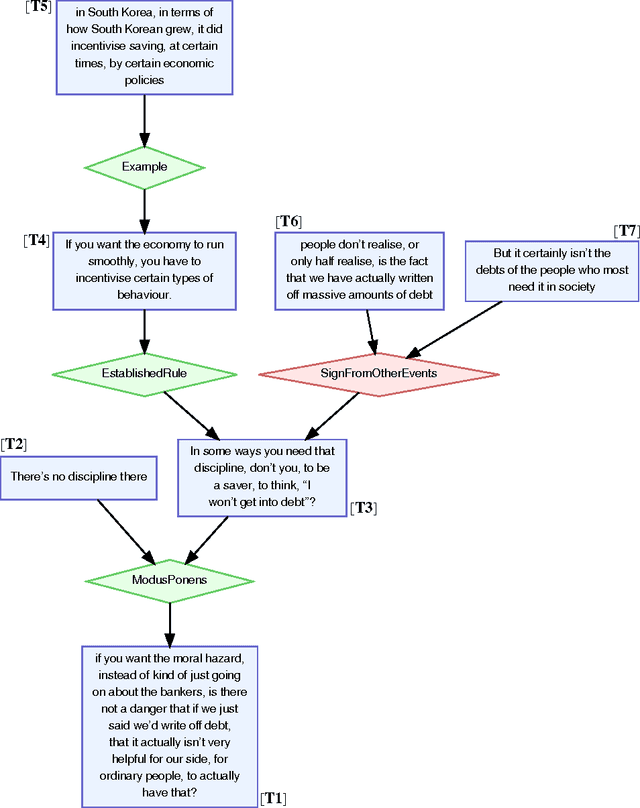
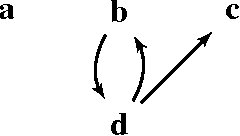
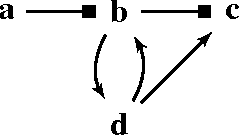

Abstract:In this paper we provide a first analysis of the research questions that arise when dealing with the problem of communicating pieces of formal argumentation through natural language interfaces. It is a generally held opinion that formal models of argumentation naturally capture human argument, and some preliminary studies have focused on justifying this view. Unfortunately, the results are not only inconclusive, but seem to suggest that explaining formal argumentation to humans is a rather articulated task. Graphical models for expressing argumentation-based reasoning are appealing, but often humans require significant training to use these tools effectively. We claim that natural language interfaces to formal argumentation systems offer a real alternative, and may be the way forward for systems that capture human argument.
Subjective Logic Operators in Trust Assessment: an Empirical Study
Nov 19, 2013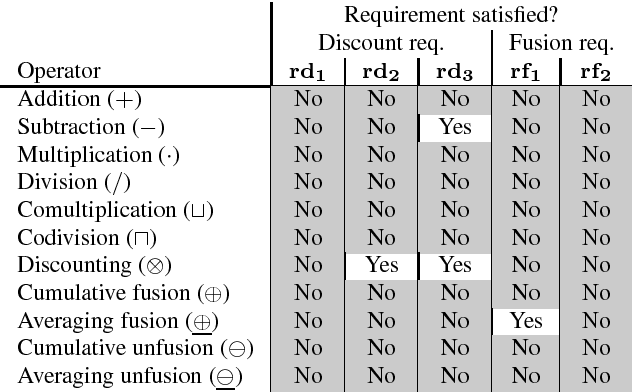
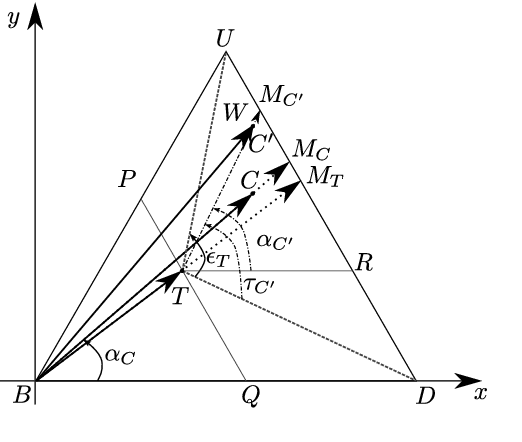
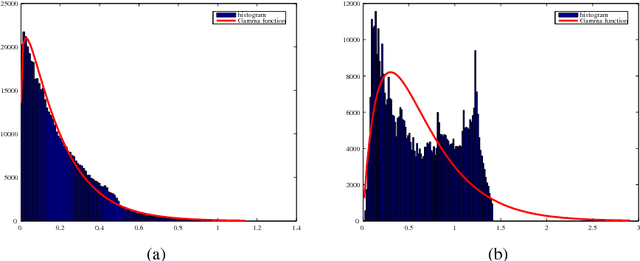

Abstract:Computational trust mechanisms aim to produce trust ratings from both direct and indirect information about agents' behaviour. Subjective Logic (SL) has been widely adopted as the core of such systems via its fusion and discount operators. In recent research we revisited the semantics of these operators to explore an alternative, geometric interpretation. In this paper we present a principled desiderata for discounting and fusion operators in SL. Building upon this we present operators that satisfy these desirable properties, including a family of discount operators. We then show, through a rigorous empirical study, that specific, geometrically interpreted operators significantly outperform standard SL operators in estimating ground truth. These novel operators offer real advantages for computational models of trust and reputation, in which they may be employed without modifying other aspects of an existing system.
 Add to Chrome
Add to Chrome Add to Firefox
Add to Firefox Add to Edge
Add to Edge